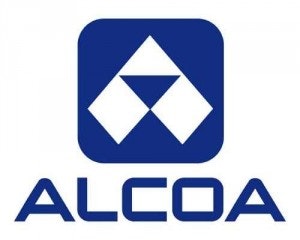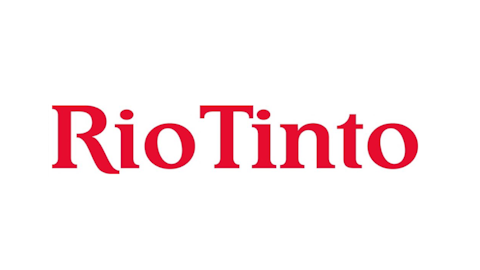
Going over the financials quickly, excluding extraordinary items, Alcoa Inc (NYSE:AA)’s earnings were $0.11 per share, 3 cents above Wall Street’s estimates. Quarterly revenues dropped by 2.9% to $5.83 billion as shipments fell by 5.5% to 1.22 million metric tons, but profits increased by 58.5% to $149 million. The company’s total long term debt has now dropped to $7.7 billion from $8.3 billion in the previous quarter and as a result its debt-to-equity ratio has fallen to 46.2%. Overall, the firm is smaller but healthier.
As I discussed in a previous article, the earnings of aluminum (and steel) producers in general and Alcoa in particular are closely tied with fuel prices. The table below shows the relationship using the Pearson Statistics. Since the industry looks to be hedged out six months, oil prices for the quarter ending Sep 2012 were compared to Alcoa Inc (NYSE:AA)’s gross margins for Q1-2013. I have used US Brent Crude ETF as a proxy for Brent and the US Oil Fund ETF for WTI. The negative correlation implies an inverse relationship, ie. as oil prices rise gross margins fall.
| Q4 2011 | Q1 2012 | Q2 2012 | Q3 2012 | Q4 2012 | Q1 2013 | |
|---|---|---|---|---|---|---|
| Margin | 12.71% | 15.12% | 13.57% | 9.72% | 15.77% | 16.90% |
| Amex BNO | 78.7 | 74.0 | 75.4 | 83.1 | 75.1 | 75.4 |
| Amex USO | 41.0 | 34.1 | 37.5 | 39.3 | 34.7 | 33.4 |
| Pearson Stat (BNO) | -0.89 | |||||
| Pearson Stat (USO) | -0.84 |
Since the beginning of Sep 2012 till the end of Mar 2013, both Brent and WTI crude have been volatile, but ultimately flat and so have Alcoa’s gross margins. If there are places where the firm was going to see a significant increase in margins it was in moving a portion of its business to selling products whose ASPs are less dependent on gross energy cost of producing aluminum itself, i.e. high value-added alloys. It also means that Alcoa is a great trading vehicle when there is a mismatch in the percentage move in the price of oil relative to aluminum.
The price of aluminum is still nowhere near what it was a couple of years ago. During the month of March, the spot price for the commodity averaged $1,911 per metric ton, which shows a drop of 12% from March-2012 and a drop of 25% from March-2011.

Amid the falling aluminum prices, Alcoa has cut its production, which was evident in the falling shipment levels as it moved towards higher margin products. Alcoa Inc (NYSE:AA) has been focusing higher value, high performance aluminum alloys used by the auto and airplane industry. Both of these industries are driving towards more fuel efficient vehicles that require higher uses of aluminum throughout the car. Auto sales in two of the biggest markets, China and the U.S, have been strong recently. The U.S market recorded sales of 1.45 million cars in March, its highest levels since August 2007. Similarly, Chinese auto sales also climbed by 13.3% in March to 1.6 million units. Alcoa is expecting the demand for aluminum to increase by 7% in the current year.
In order to improve its margins, Alcoa Inc (NYSE:AA) is also developing an $11 billion plant in Saudi Arabia, which is going to be its most cost effective facility in the world for producing aluminum.
However, the supply issues are going to persist. According to Bloomberg’s data, in 2012 the total supply exceeded demand by 906,440 tons. For 2013, the biggest aluminum consumer, China, is going to produce 350,000 tons of more aluminum than it will consume. The surplus is therefore expected to keep a lid on price levels. China becoming a net exporter of aluminum makes for a difficult environment amid slowing global growth.
For 2013, commodity prices are signaling continued low growth while emerging markets like Southeast Asia continue to evolve into larger market players and will be able to do so with strongly appreciating currencies if their central banks continue to hold the line against monetary debasement in the West. China’s producers will feel the sting of a rising yuan as they try to dump excess production on the region. They may well have to sell at a loss to compete with players like Alcoa Inc (NYSE:AA), BHP Billiton Limited (ADR) (NYSE:BHP) and Rio Tinto plc (ADR) (NYSE:RIO). In any case until the industry mothballs at least another 5% of its current production the market will favor those that resist fighting the competitive devaluation war. If commodity inflation begins anew it will occur in oil before aluminum given the current market structure, which will put a heavy strain on future growth.
The article Alcoa Looks to Increase Margins Amid Lower Prices originally appeared on Fool.com and is written by Peter Pham.
Copyright © 1995 – 2013 The Motley Fool, LLC. All rights reserved. The Motley Fool has a disclosure policy.
